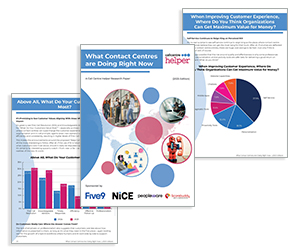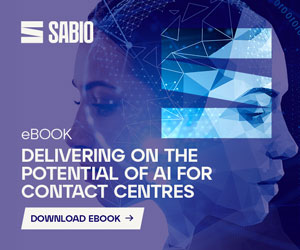This blog summarises the key points from a recent article from David McGeough at Scorebuddy, where he unpacks the key roadblocks CTOs face in adopting AI in the contact centre – and how to turn those hurdles into stepping stones.
AI is rapidly becoming a cornerstone of modern contact centre operations, driving everything from smarter workflows to improved customer satisfaction. As adoption grows, so too does the pressure on tech leaders to integrate it effectively and responsibly.
However, it’s not all smooth sailing. Many IT and operations teams are expressing concerns about the risks, complexity, and costs tied to AI implementation. In fact, recent data reveals that skepticism is outpacing enthusiasm among tech leaders – highlighting a clear need for a more thoughtful approach.
Despite the hesitation, AI still holds massive potential. When rolled out with the right strategy, it can unlock innovation and boost performance across the board.
Why AI Adoption Hits Roadblocks in Contact Centres
AI is transforming industries across the board, and the contact centre is no exception. Yet, despite the hype and growing list of use cases, many organizations still find themselves stuck at the adoption stage. CTOs and IT leaders are raising important concerns that, if left unresolved, could stall progress altogether.
One of the biggest obstacles is data. Without clean, reliable datasets, AI tools can generate inaccurate or even biased outputs-something no contact centre can afford, especially when dealing with sensitive customer interactions.
Then there’s the lack of internal guidance: without clear policies on how AI should be used, confusion and ethical questions quickly follow.
The cost of implementation is another sticking point, as many tools require significant upfront investment. Even when budgets allow for it, tracking AI’s actual performance can be difficult without a structured evaluation framework.
Add to that a shortage of AI-savvy staff and the constant evolution of the technology, and it’s easy to see why leaders feel overwhelmed.
9 Real-World AI Challenges for CTOs-and How to Solve Them
So how do we move from hesitation to confident adoption? Below are nine of the most common challenges CTOs face when introducing AI into contact centre operations, along with practical strategies to address them.
1. Start with Clean, Structured Data
Any AI strategy is only as good as the data it’s built on. To get accurate and fair results, you need to ensure your data is clean, well-organized, and free from bias. This might involve investing in data management platforms or setting up better internal governance.
For instance, if your AI is trained on customer data, it must be labelled consistently and never allowed to make assumptions based on demographic traits. A proactive approach to data hygiene pays off-because without it, your AI outputs could do more harm than good.
2. Make Data Security a Priority
Data quality is one thing, but security is another critical piece of the puzzle. contact centres deal with a high volume of sensitive information, and a single misstep can have serious legal and reputational consequences. To mitigate this, leaders must adopt a comprehensive approach to security.
Think encryption for both stored and in-transit data, access controls that restrict who sees what, and systems that monitor AI interactions for compliance. And don’t forget about your vendors-any third-party AI tools need to meet your own high security standards, too.
3. Create a Controlled Testing Environment
Rolling out an AI tool without proper testing is a recipe for disaster. Before anything goes live, you need a test-and-compare setup where models can be assessed for accuracy, consistency, and potential bias.
With AI tools evolving rapidly, this can’t be a one-time step-it needs to be part of an ongoing evaluation cycle. Comparing outputs across different models helps flag inconsistencies early and builds internal confidence in your deployment.
4. Maintain Human Oversight
Even the most sophisticated AI needs human supervision. Especially in customer-facing roles, it’s crucial to have processes in place where humans can step in, review AI decisions, and intervene when needed.
This might mean training support agents to review auto-generated responses or setting up clear escalation paths. A human-in-the-loop model ensures that your AI stays ethical, accurate, and aligned with your customer service values.
5. Set Clear AI Governance Policies
Without internal policies, AI usage can become a free-for-all. CTOs must take the lead in drafting clear, enforceable guidelines around AI development, deployment, and monitoring.
These should cover data handling, model transparency, and accountability measures. The introduction of the EU AI Act makes this even more pressing, as businesses are now legally required to follow risk-based obligations for different types of AI applications.
6. Upskill Your People
If your workforce doesn’t understand how AI works-or what its ethical risks are-you’re going to run into trouble.
Regular training sessions can help demystify the technology, while reinforcing principles like fairness, transparency, and bias mitigation. Make this training available at all levels of the organization, from support agents to senior execs. AI isn’t just a tech issue-it’s a cultural one, too.
7. Encourage Open Dialogue
To successfully implement AI, everyone from the C-suite to the front lines needs to be on the same page. This requires transparency and a willingness to listen.
Inviting feedback from across the business not only uncovers blind spots but also fosters trust and collaboration. Employees who feel heard are far more likely to engage with the changes AI brings.
8. Measure What Matters
AI should deliver measurable value. To prove its worth, you’ll need to track performance metrics-think resolution speed, customer satisfaction scores, and cost savings.
But this shouldn’t come at the expense of ethical standards. Building your measurement framework around both business and compliance goals helps ensure your AI efforts are balanced, accountable, and genuinely useful.
9. Keep Pace with the AI Landscape
AI is advancing fast, and standing still isn’t an option. For CTOs, staying informed is essential. Whether it’s tracking regulatory changes, evaluating new tools, or learning from industry peers, continuous learning should be baked into your AI strategy.
When leaders stay current, they’re better equipped to guide their organizations through change-and seize the opportunities that AI can bring.
How QA Supports Safer AI Use
Quality assurance (QA) and AI don’t just coexist-they enhance one another. While AI can be used to automate QA processes, your QA team also plays a critical role in monitoring and validating the performance of AI systems.
For example, they can review AI-generated customer interactions to ensure they’re accurate and compliant.
They can flag responses that require human review or spot patterns of bias in conversations. QA teams can also help document AI behaviour over time, supporting ongoing optimization and keeping stakeholders informed.
In many ways, QA provides the feedback loop that makes AI adoption safer, smarter, and more aligned with your business goals.
This blog post has been re-published by kind permission of Scorebuddy – View the Original Article
For more information about Scorebuddy - visit the Scorebuddy Website
Call Centre Helper is not responsible for the content of these guest blog posts. The opinions expressed in this article are those of the author, and do not necessarily reflect those of Call Centre Helper.
Author: Scorebuddy
Reviewed by: Jo Robinson
Published On: 16th May 2025
Read more about - Guest Blogs, David McGeough, Scorebuddy






 Scorebuddy is quality assurance solution for scoring customer service calls, emails and web chat. It is a dedicated, stand-alone staff scoring system based in the cloud, requiring no integration.
Scorebuddy is quality assurance solution for scoring customer service calls, emails and web chat. It is a dedicated, stand-alone staff scoring system based in the cloud, requiring no integration. 































